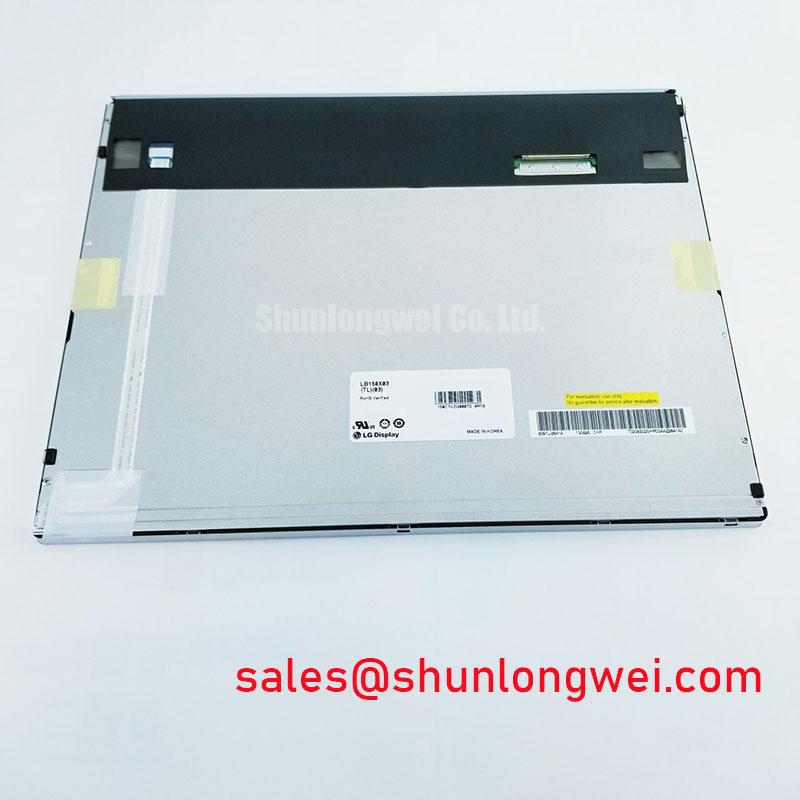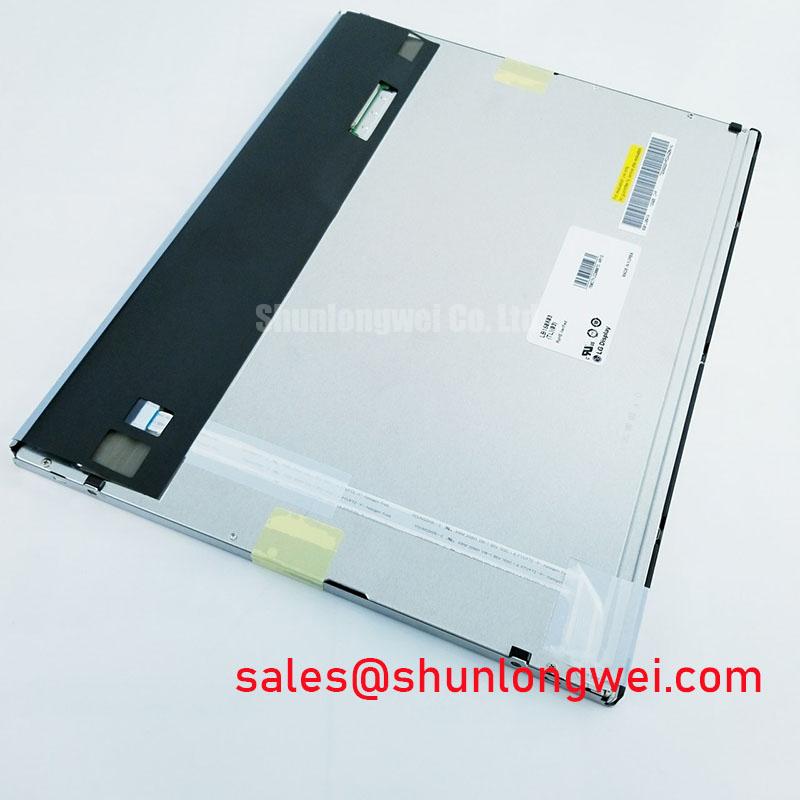Content last revised on November 22, 2025
LB150X03-TL03: An Engineer's Guide to this 15.0-inch XGA Industrial Display
A Robust Display Solution for Demanding Industrial Environments
The LG Display LB150X03-TL03 is a 15.0-inch a-Si TFT-LCD module engineered for longevity and consistent performance in industrial and specialized commercial applications. It delivers crisp, reliable visuals with a classic 4:3 aspect ratio, making it an excellent component for system upgrades or new designs that require proven technology. With its robust operational temperature range and standard interface, it simplifies integration and ensures dependability where it matters most. For systems requiring a similar form factor but with different specifications, the G150XNE-L01 offers an alternative feature set. What is the key advantage of its design? A wide operating temperature range that ensures performance integrity from -20°C to 70°C. With its focus on operational resilience, the LB150X03-TL03 is the optimal choice for industrial HMIs and control panels that must function reliably in thermally dynamic environments.
Key Parameter Overview
Decoding the Specs for Environmental and Integration Reliability
The technical specifications of the LB150X03-TL03 are foundational to its reliable performance in challenging settings. Each parameter is a critical piece of the puzzle for engineers designing long-life industrial equipment. The combination of a wide temperature range and a standard LVDS interface is particularly significant, as it directly addresses two core challenges: environmental resilience and ease of system integration.
| Parameter | Specification | Engineering Value & Interpretation |
| Screen Size | 15.0 inch | Provides a substantial viewing area suitable for complex data visualization in industrial control panels and medical HMI systems. |
| Resolution | 1024(RGB)×768, XGA | Offers a standard XGA resolution that is widely supported by industrial controllers and single-board computers, ensuring compatibility and clear, sharp graphics. |
| Brightness | 400 cd/m² (Typ.) | Delivers sufficient luminance for readability in typical indoor industrial and factory floor environments with controlled lighting. |
| Contrast Ratio | 700:1 (Typ.) | A 700:1 contrast ratio ensures clear differentiation between light and dark shades, crucial for detailed graphical interfaces. This is like the difference between reading a faded newspaper and a freshly printed page; the higher contrast makes information easier to discern at a glance. |
| Operating Temperature | -20 ~ 70 °C | This wide operational range is a defining feature, guaranteeing stable performance in unconditioned environments such as outdoor kiosks, factory floors, or transportation systems where temperatures can fluctuate significantly. |
| Storage Temperature | -30 ~ 75 °C | Provides a robust margin for logistics and storage, ensuring panel integrity even before deployment in harsh conditions. |
| Interface | LVDS (1 ch, 6/8-bit), 30 pins | Utilizes a standard LVDS Interface, which is a mature, reliable, and low-EMI solution that simplifies the connection to a wide array of embedded systems and display drivers. |
| Backlight | WLED, 50K hours, with LED Driver | The White LED backlight system is rated for 50,000 hours of operation, ensuring a long service life that matches the lifecycle expectations of industrial machinery. |
Download the LB150X03-TL03 datasheet for detailed specifications and performance curves.
Application Scenarios & Value
Achieving System-Level Benefits in Industrial and Medical HMIs
The LB150X03-TL03 is engineered for applications where operational uptime and display clarity are non-negotiable. Its value proposition is centered on providing a durable and easily integrable visual interface for a variety of demanding professional systems.
A high-fidelity engineering scenario for this panel is its integration into a Programmable Logic Controller (PLC) interface on a manufacturing floor. In this environment, ambient temperatures can swing from cold morning startups to high afternoon heat near machinery. The LB150X03-TL03's -20 to 70°C operating range directly addresses this challenge, ensuring the Human-Machine Interface (HMI) remains functional and readable without requiring complex and costly thermal management systems. The antiglare surface treatment further enhances usability by minimizing reflections from overhead factory lighting, reducing operator eye strain and preventing errors. For applications demanding higher resolution in a similar size, the G156XW01 V0 provides an alternative.
Frequently Asked Questions (FAQ)
What is the primary benefit of the -20 to 70°C operating temperature range for an industrial application?
This wide temperature range ensures the display operates reliably in environments without climate control, such as factory floors, warehouses, or outdoor-housed control panels. It eliminates the need for auxiliary heating or cooling components in many designs, reducing system complexity, cost, and potential points of failure.
How does the 700:1 contrast ratio impact usability in an HMI?
A 700:1 contrast ratio provides distinct separation between colors and shades, making graphical user interfaces, text, and critical alerts sharp and easy to read. This is particularly important for reducing operator error when monitoring complex processes or data in variable lighting conditions.
Is the LVDS interface on this model difficult to integrate with modern single-board computers?
No, the LVDS interface is a well-established standard in the embedded systems world. Its widespread adoption means that drivers and support are readily available for most industrial-grade motherboards and single-board computers, making system integration straightforward and reliable.
What does the 50,000-hour backlight lifetime mean in practical terms?
A 50,000-hour backlight lifetime translates to approximately 5.7 years of continuous, 24/7 operation before the backlight reaches 50% of its original brightness. For typical industrial applications running 8-12 hours a day, this ensures a service life of well over a decade, aligning with the long lifecycle of the equipment it's built into.
Does the antiglare surface treatment affect color accuracy?
While any surface treatment can have a minor effect, the antiglare coating is engineered to diffuse ambient light with minimal impact on color fidelity and clarity. For industrial applications, the benefit of enhanced readability in bright light far outweighs any subtle changes in color perception, making it a critical feature for usability.
Technical Deep Dive
Implications of a-Si TFT Technology and WLED Backlighting in Legacy Systems
The LB150X03-TL03 is built on amorphous silicon (a-Si TFT) technology, a mature and cost-effective manufacturing process known for its stability and reliability. For engineers maintaining or upgrading legacy systems, this is a significant advantage. The electrical and timing characteristics of a-Si panels are well-understood and highly compatible with a vast ecosystem of existing display controllers and drivers, mitigating the risks associated with integrating newer, more sensitive technologies.
Furthermore, the transition from older CCFL backlights to the WLED system in this model offers a direct upgrade path. The WLED backlight not only provides a longer operational lifespan (50,000 hours) but also consumes less power and generates less heat. This creates an easier thermal management challenge for the system designer. Thinking of power consumption as a "thermal budget," a more efficient backlight leaves more of that budget for the main processing unit, potentially allowing for a higher-performance processor or a smaller, fanless enclosure design.
An Engineer's Perspective
From an engineering standpoint, the LB150X03-TL03 represents a low-risk, high-reliability component choice for long-lifecycle industrial products. Its adherence to standard interfaces (LVDS), a common resolution (XGA), and a robust environmental specification removes many of the variables and uncertainties from the design process. This is not a display for cutting-edge consumer devices; it is a workhorse designed for environments where failure is not an option. Its feature set is deliberately focused on durability and compatibility, ensuring that it can be seamlessly designed into a new system or serve as a dependable replacement part for years to come, maximizing the return on investment for the end equipment. For engineers developing systems for harsh conditions, consider exploring broader strategies for building reliable displays in heavy machinery.






